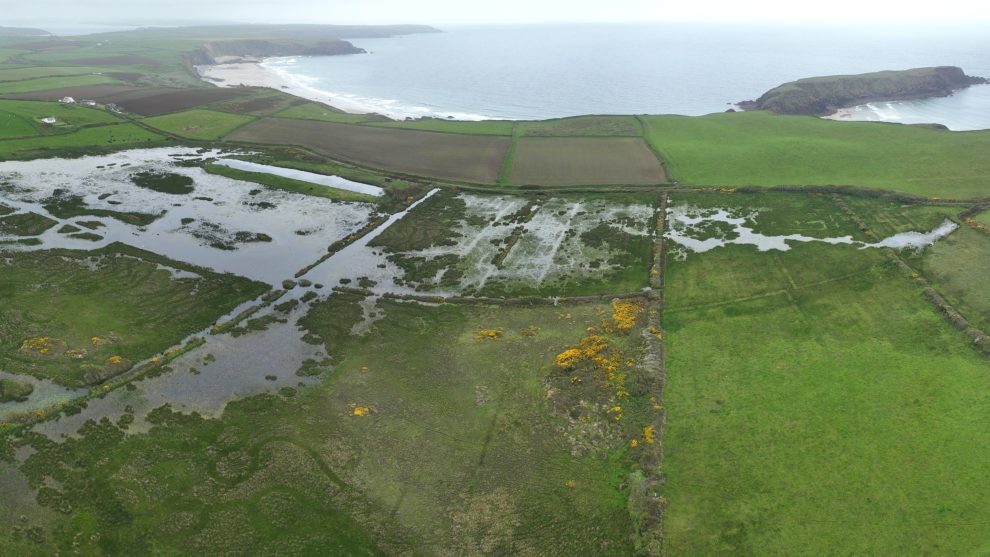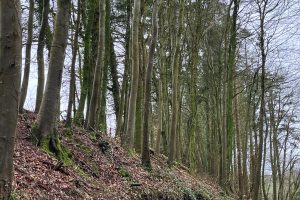On World Wetlands Day, 2 February, National Trust Cymru are celebrating a significant project milestone in the restoration of Marloes Mere wetlands to benefit nature and people.
The first phase of the Pembrokeshire based project has seen 1.5 hectares, or an area about three times as big as a football field, of precious habitat restored. With deep-water reservoirs reconnected to surrounding shallower wetlands and improvements made to path networks.
Cared for by the conservation charity, the Marloes Peninsula is nestled on the very western edge of Wales. Overlooking the Celtic Sea, the area offers dramatic coastal landscapes and habitats, with expanses of coastal heathland and the hidden gem of Marloes Mere.
Designated a Site of Special Scientific Interest (SSSI), the Mere is vital to a diverse range of wetland birds and wildlife and home to some particularly rare plants such as the three-lobed crowfoot as well as ten different sedges grasses and marsh orchids.
The winter months bring an array of wildfowl including mallard and teal ducks, declining species such as lapwings and golden plover and other migratory waterbirds. Whilst in the summer resident insects such as dragonflies, including the emperor dragonfly, damselflies, beetles and the great green bush-cricket fill the marshland.
However, agricultural reservoirs dug in the 1970’s had left their mark on the landscape. Now, with support from Natural Resources Wales (NRW) and National Trust Cymru tenant farmers at Trehill Farm, restoration work is well underway to bring them back to life.
Mark Underhill, National Trust Cymru’s Countryside Manager for Pembrokeshire said:
“In this first phase of restoration work on the Mere we have removed a large amount of natural material that was placed there when the reservoirs were excavated in the 1970s. This has opened up the landscape and the views across the mere are now fantastic.
It has also revealed nearly 1.5ha of wetland that has been buried for the last 50 years and reconnected the shallows of the Mere to the deeper waters of the reservoir. This will improve the wetland habitats and boost a wide range of flora and fauna.”
But it’s not just nature that will benefit from this recent work, visitors now have new and improved access to the reformed wetlands.
The relocation of 500m of wet and muddy footpaths onto higher, drier, ground has improved links to the Mere and popular Wales Coastal Path. In addition to this access routes from Marloes Sands car park are now suitable for all-terrain mobility scooters (trampers), connecting to Runwayskiln and places to view impressive wetland vistas and wildlife watch.
Mark Underhill adds:
“Access to nature and beauty has proved to be essential to our health and wellbeing. By improving the network of footpaths at Marloes Mere we are increasing access to this wonderful wetland on the edge of Wales for everyone to enjoy.”
An additional 5 hectares of wetlands restoration is planned with the addition new permissive paths to create circular routes and new bird hides.
Donations towards the restoration of Marloes Mere Wetlands were received from the Waterloo Foundation, Natural Resources Wales, The Langdale Trust and private donations.
To find out more about how National Trust Cymru care for Marloes Mere and the wider peninsula visit www.nationaltrust.org.uk/marloes-sands-and-mere.



















